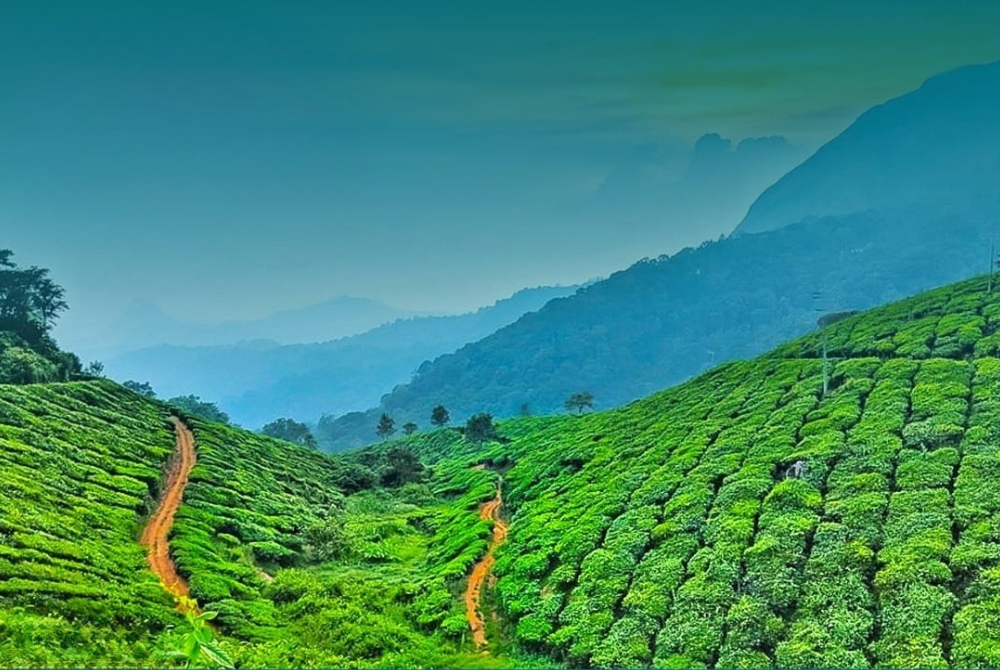Nestled in the northeastern corner of Bangladesh lies the captivating Sylhet District, a land with a rich historical tapestry and unparalleled natural beauty. Sylhet Division houses a captivating valley, a land shaped by the graceful intertwining of two rivers: The Surma and The Kushiara. These waterways are brought to life by countless hill streams that flow from both the north and the south, creating a landscape of remarkable beauty.
The Sylhet valley is graced with the presence of “haors,” expansive natural depressions that punctuate the region’s topography. In the winter months, these haors transform into vast stretches of lush greenery, painting the land with a soothing palette. However, come the rainy season, they undergo a remarkable metamorphosis, becoming turbulent seas that surge with the monsoon’s might. Yet, these haors are more than just geological wonders; they serve as a vital sanctuary for millions of migratory birds.
These avian travelers embark on an awe-inspiring journey, flying all the way from Siberia, traversing the formidable Himalayan range, to find refuge in the welcoming embrace of Sylhet’s haors. Here, amidst the verdant landscapes, they seek respite from the unforgiving cold of their distant Siberian homes.
It is in this enchanting valley that the Englishmen of the 18th century discovered a treasure trove of rich potential—tea. They ventured into tea plantation, and their fortunes flourished. Located approximately 80 kilometers from the heart of Sylhet town and well-connected by both road and rail, Srimangal emerges as the epicenter of this tea-rich realm. Often referred to as the “tea capital of Bangladesh,” Srimangal boasts an aura of authenticity that resonates with the essence of tea cultivation.
As one journeys through this landscape, the eyes are treated to a mesmerizing sight—the teagardens sprawled like an emerald carpet, unfurling across the plains and adorning the slopes of the rolling hills. It is an experience that remains etched in memory—the gentle rustling of tea leaves, the soothing scent of fresh brew, and the breathtaking panorama that unfolds at every turn.
Sylhet, known as the “tea granary of Bangladesh,” wears its tea legacy with pride. Here, more than 150 tea gardens thrive, each contributing to the region’s storied tea heritage. What sets Sylhet apart is its claim to fame as the home to three of the world’s largest tea gardens, both in terms of vast acreage and prodigious production. In every sip of Sylhet’s tea, one can taste the centuries of tradition, the dedication of generations, and the beauty of a land where nature and human endeavor harmoniously coexist.
Let’s embark on a journey through time and nature to explore what this remarkable region has to offer.
A Glimpse into History:
Sylhet district’s history is as diverse as it is intriguing. Established on January 3, 1782, it was initially part of the Bengal Province under Dhaka Division. However, in 1878, it found itself in the newly created Assam Province, remaining there until 1947, except for a brief stint in the administrative reshuffle of Bengal Province between 1905 and 1912. In 1947, following a referendum (with the exception of 3½ thanas of Karimganj subdivision), Sylhet became part of East Pakistan, forming a crucial part of the Chittagong Division.
Eventually, in 1983–84, Sylhet district was divided into four districts, with the current Sylhet District known as North Sylhet. In 1995, it became a part of the newly formed Sylhet Division, solidifying its place in the mosaic of Bangladesh’s administrative regions. Over the years, Sylhet has played a pivotal role in Bangladesh’s economy, with several of the country’s finance ministers representing Sylhet in Parliament.
Exploring the Diversity:
Sylhet District is divided into thirteen upazilas, each offering a unique glimpse into the region’s cultural and geographical diversity. From the lush landscapes of Companiganj to the historic charm of Osmani Nagar, these upazilas paint a colorful picture of Sylhet’s multifaceted identity.
The upazilas include:
- Balaganj
- Beanibazar
- Bishwanath
- Companiganj
- Dakshin Surma
- Fenchuganj
- Golapganj
- Gowainghat
- Jaintiapur
- Kanaighat
- Osmani Nagar
- Sylhet Sadar
- Zakiganj
Nature’s Canvas:
Sylhet boasts a tropical monsoon climate with elements of a humid subtropical climate at higher elevations. The rainy season, spanning from April to October, envelops the region in heavy showers and thunderstorms. It’s a time when the landscape comes alive in vibrant hues. The short dry season, from November to February, brings warmth and clarity to the surroundings. An astounding 80% of the annual average rainfall of 4,200 millimeters occurs between May and September. This climatic diversity contributes to Sylhet’s rich biodiversity and stunning natural scenery. In the heart of Bangladesh’s Sylhet District lies a treasure trove of natural wonders and cultural heritage, inviting travelers to explore its enchanting beauty.
Lalakhal – Nature’s Palette:
Nestled in Jaintiapur, Sylhet District, Lalakhal is a true gem awaiting discovery. It’s a wide channel within the Sharee River, just a stone’s throw from the Tamabil road. What makes Lalakhal truly extraordinary is the ever-changing water hues, ranging from shades of blue to green and crystal clear at different bends.
Bichnakandi – Where Stones Tell Tales:
Venturing into the Rustompur Union of Gowainghat Upazila, you’ll find the village of Bichnakandi, often referred to as Bisnakandi. Its name, a fusion of ‘Bichhana’ (or ‘Bisna’ in Sylheti), meaning bed, and ‘kandi,’ signifying a dam or cluster, perfectly captures its essence. Here, countless stones, stacked like beds, create a mesmerizing landscape. It’s a quarry where rocks from riverbeds are collected. What’s unique is how layers of the Khasi mountains converge here, creating a lake connected to the Piyain River. Natural rocks, brought down by mountain streams, form this captivating place near the Bangladesh-India border.
Shah Jalal Dargah – A Sacred Haven:
In the heart of Sylhet, Bangladesh, the Shah Jalal Dargah stands as a shrine and the resting place of the revered 14th-century Muslim saint, Shah Jalal. Constructed around 1500, this site has evolved over centuries and become a prominent religious center. It houses four mosques, a religious school, a public cemetery, and more within its expansive compound. Shah Jalal Dargah stands as the largest and most revered religious site in Bangladesh, cherished by Bengalis and surrounded by rich folklore.
Jaflong – Where Nature Meets Culture:
Jaflong, located in Gowainghat Upazila, is a captivating hill station in Sylhet Division. Just 60 km from Sylhet town, it’s a two-hour drive through lush tea gardens and rolling hills. Jaflong’s charm lies in its breathtaking landscapes and vibrant Khasi tribal culture. It’s renowned for stone collections, and the Khasi tribe calls this place home.
The Allure of Jaflong:
- Jaflong, a treasure of the Sylhet division, boasts picturesque tea gardens and captivating rolling stone collections. It’s a window into the colorful tribal life of the Khasi people. The Dawki and Piyain Rivers add to its allure, as do tea gardens, orange and jackfruit orchards, and betel leaf and areca nut plantations. Don’t miss a visit to Dawki Bazar, where local life unfolds.
- Jaflong is known for stone extraction from the bed of the Goyain River, but it has faced challenges due to land encroachment and unauthorized stone crushing mills. The local environment has suffered. However, a dedicated effort is underway to reclaim the land and establish Jaflong Green Park, a recreation-cum-botanical haven.
- Jaflong Green Park is a testament to the commitment to environmental preservation. Laskar Muqsudur Rahman, Deputy Conservator of Forests, initiated this project to combat encroachments and restore ecological balance. Through determined efforts, a reforestation program is breathing new life into this precious land, with various tree species taking root.
The Sylhet District, with its natural wonders and cultural richness, offers a journey into the heart of Bangladesh’s beauty and heritage. It’s a place where nature and tradition come together, creating a tapestry of experiences waiting to be explored.

